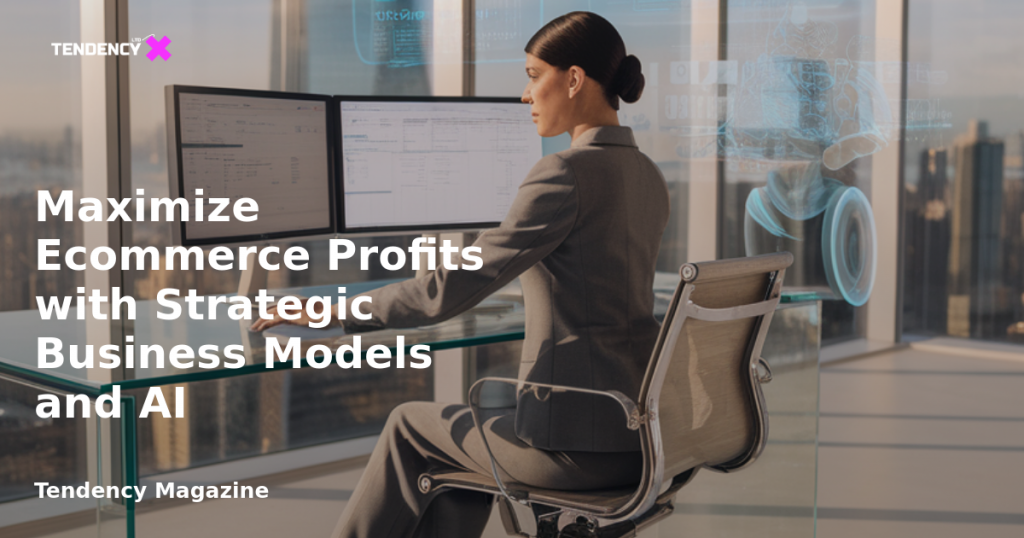Maximize Ecommerce Profits with Strategic Business Models and AI

Table of Contents
- Introduction
- The Importance of Strategic Business Models
- Understanding Fixed and Variable Costs
- Optimizing Supplier Relationships
- Efficient Ad Buying Strategies
- Leveraging AI for Creative Iteration
- Conclusion
Introduction
In the dynamic world of ecommerce, understanding and optimizing your business model can significantly enhance your profitability. While having a standout product is crucial, the underlying business strategies play an equally vital role in determining success. Many ecommerce entrepreneurs overlook the potential profits hidden within their profit-and-loss (P&L) strategies. By strategically structuring your business, you can unlock unique value and gain a competitive edge in the market. This article delves into effective strategies to maximize ecommerce profits through strategic business models and the integration of artificial intelligence (AI).
The Importance of Strategic Business Models
As an ecommerce business owner, it’s essential to recognize the competitive advantages embedded within your business model. This involves more than just offering a superior product; it requires a deep understanding of how your business is structured to deliver value. For instance, businesses with low fulfillment and shipping costs or those that operate on subscription models can capitalize on these structural advantages to enhance profitability.
Strategic business models allow companies to identify and exploit unique opportunities within their operations. By focusing on profit-and-loss strategies, you can discover untapped potential within your business, leading to increased margins and overall profitability.
Understanding Fixed and Variable Costs
A fundamental step in maximizing ecommerce profits is gaining a clear understanding of your fixed and variable costs. Fixed costs include expenses such as salaries, rent, and utilities, while variable costs encompass shipping, packaging, and transaction fees. Regularly reviewing your P&L statement is crucial in identifying areas where costs can be minimized.
A successful direct-to-consumer (DTC) business typically aims for a margin of 60 to 70 points after accounting for fixed and variable costs. This margin acts as a financial cushion, allowing businesses to reinvest in growth opportunities and withstand market fluctuations.
Optimizing Supplier Relationships
Cost efficiency begins at the source. Securing favorable terms with manufacturers and suppliers is vital in keeping production costs low. This involves thorough research and negotiation to find the best partners who align with your business goals. By understanding the motivations of manufacturers, you can negotiate better terms, such as volume discounts, which can significantly improve your margins.
For those with limited capital, conducting your own research and price comparisons can yield substantial savings. Building strong relationships with suppliers not only reduces costs but also ensures a reliable supply chain, contributing to overall business stability.
Efficient Ad Buying Strategies
In the ever-evolving digital advertising landscape, it’s crucial to focus on proven advertising principles rather than chasing every new trend. Efficient ad buying involves strategic use of manual bidding techniques such as cost caps, bid caps, and target return on ad spend (ROAS) campaigns. These methods ensure that your advertising budget is allocated effectively, maximizing the return on investment.
By suppressing spending on underperforming ads and scaling successful ones, businesses can optimize their advertising efforts and achieve better results. This strategic approach to ad buying prevents unnecessary expenditure and enhances overall profitability.
Leveraging AI for Creative Iteration
Artificial intelligence offers significant potential in reducing advertising costs, particularly in creative production. AI tools can streamline the process of creating and testing different ad formats, allowing for quicker iterations and more efficient use of resources. By utilizing AI to adapt existing content into multiple formats, businesses can test various creative approaches without incurring high production costs.
AI-driven creative processes not only save time and money but also enable businesses to respond swiftly to market trends, ensuring that their advertising remains relevant and effective.
Conclusion
Maximizing ecommerce profits requires a strategic approach that encompasses both business model optimization and the integration of advanced technologies like AI. By understanding your costs, optimizing supplier relationships, implementing efficient ad buying strategies, and leveraging AI for creative iteration, you can unlock significant value within your ecommerce business. These strategies not only enhance profitability but also position your business for sustainable growth in the competitive ecommerce landscape.
2025 Tendency LTD. All rights reserved.

